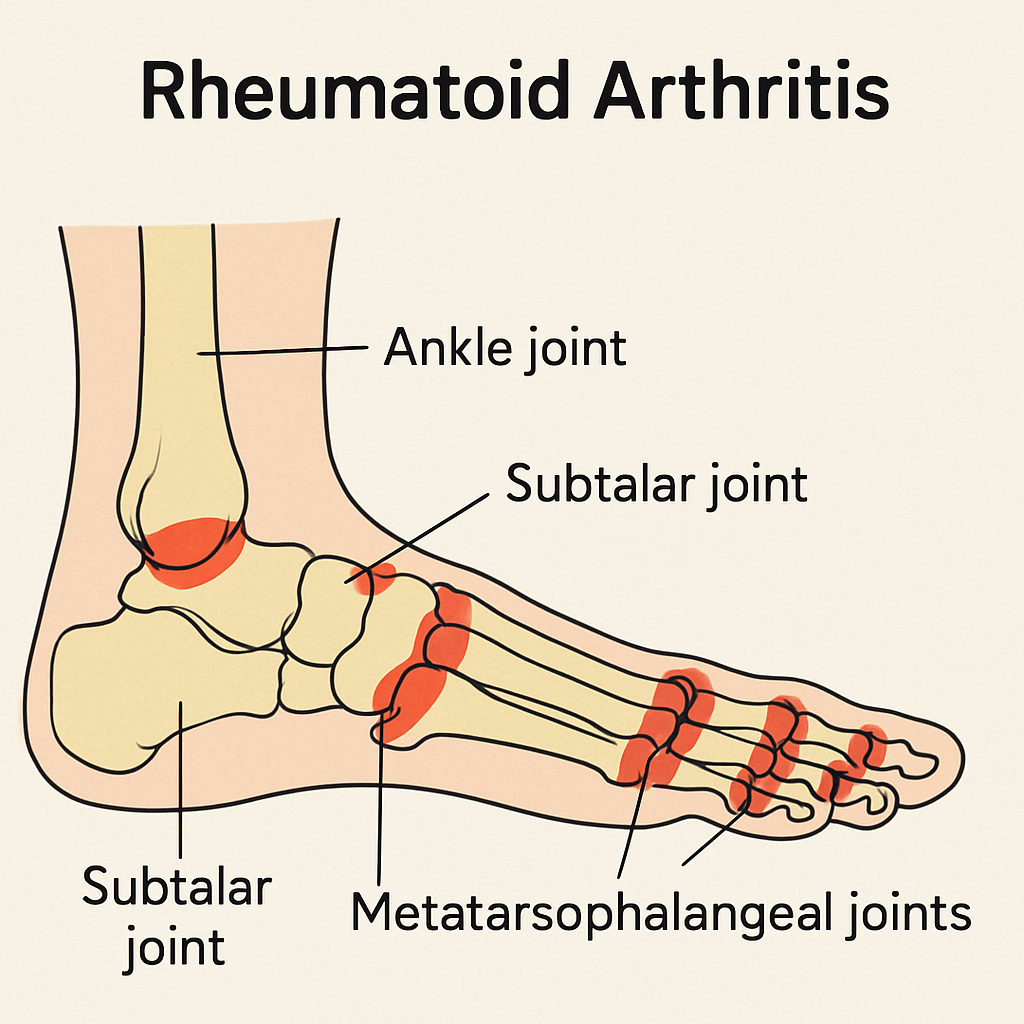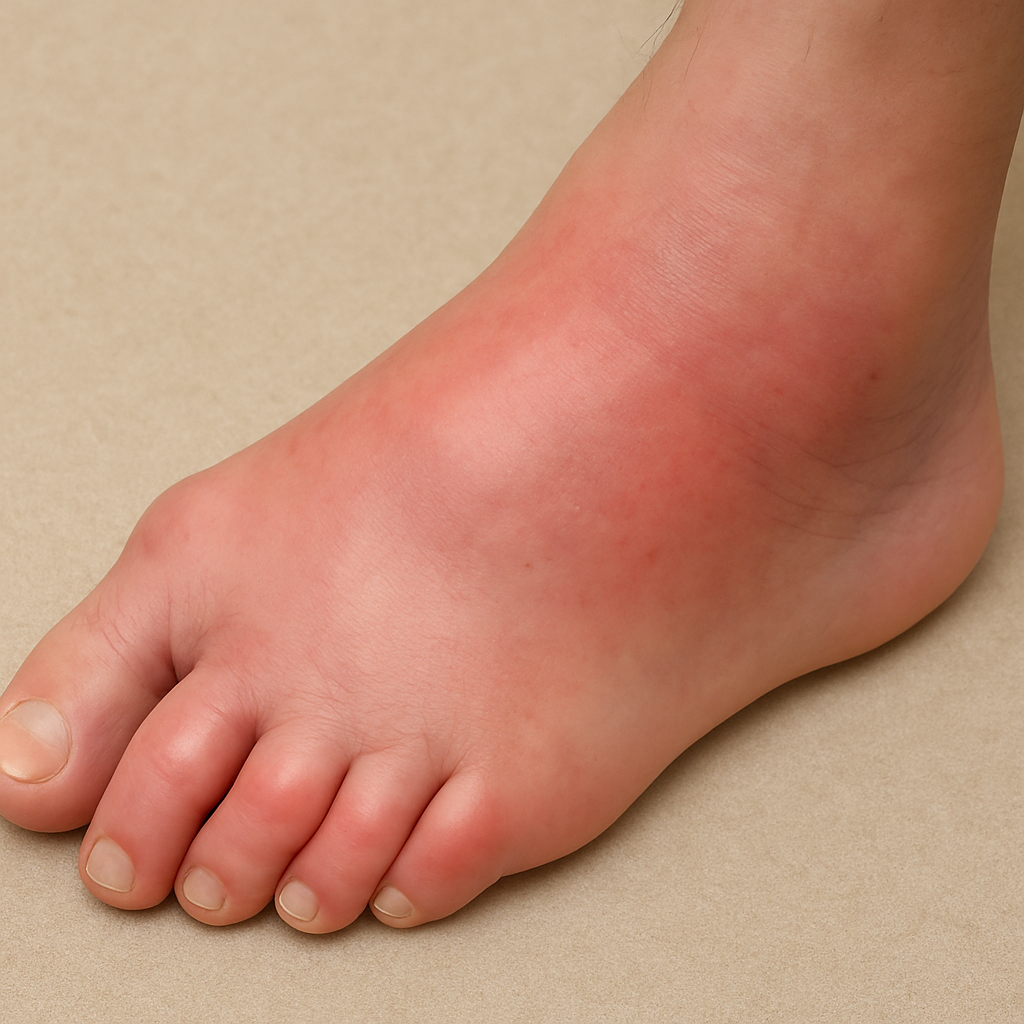Recognising Foot Symptoms of Rheumatoid Arthritis
Rheumatoid arthritis (RA) is an autoimmune disease that primarily attacks the joints, leading to inflammation, pain, and sometimes deformity. While many people associate RA with joint pain in the hands, the feet are often where the early symptoms appear. Recognising these symptoms early can make a significant difference in managing the disease effectively.

The Role of the Immune System
RA occurs when your immune system mistakenly attacks your own body’s tissues. Unlike the wear-and-tear damage of osteoarthritis, RA affects the lining of your joints, causing a painful swelling that can eventually result in bone erosion and joint deformity.
Early Symptoms of Rheumatoid Arthritis in Feet

Persistent Joint Pain
One of the first symptoms you might notice is persistent joint pain in the toes or the ball of your foot. This pain can feel similar to a sprain or strain, but doesn’t improve over time.
Swelling and Redness
Inflammation caused by RA can result in noticeable swelling and redness in the joints of your feet. This swelling can make it difficult to wear shoes comfortably and can be a clear indicator of underlying issues.
Stiffness in the Morning
Morning stiffness is a common early symptom of RA. You might notice that your feet feel particularly stiff and hard to move when you first wake up, but that it gradually improves as you start moving around.
Formation of Nodules
Rheumatoid nodules, or lumps of tissue, can form under the skin around affected joints. While these nodules can appear anywhere in the body, they are often found around the feet and can cause discomfort or pain when wearing shoes.
Importance of Early Detection
Detecting rheumatoid arthritis early is crucial for effective management. Early treatment can slow the progression of the disease and reduce the risk of joint damage.
Seeking Medical Advice
If you notice any of the early symptoms of RA in your feet, it’s important to consult with a healthcare professional. They can perform a physical examination and may recommend blood tests or imaging studies to confirm a diagnosis.
Treatment Options
Once diagnosed, there are various treatment options available, including medications, physical therapy, and lifestyle changes. Early intervention can help control symptoms and improve quality of life.
Footwear Considerations for RA Patients
Proper footwear is essential for managing foot symptoms of RA. Here’s what to consider:
Choosing the Right Shoes
Look for shoes that provide ample support and cushioning. They should have a wide toe box to accommodate any swelling or deformities. Avoid high heels or shoes with narrow toes, as they can exacerbate symptoms.
The Role of Diabetic Footwear
Diabetic shoes, designed to reduce the risk of skin breakdown and provide additional support, can be beneficial for those with RA. They often feature extra depth, seamless interiors, and are made from materials that accommodate swelling.
Custom Orthotics
Custom orthotics can provide additional support and help alleviate pain by redistributing pressure away from affected joints. Consult with a podiatrist for a fitting if you think orthotics might help.
Managing Symptoms and Living Well with RA
Living with rheumatoid arthritis can be challenging, but there are ways to manage symptoms and maintain a good quality of life.
Regular Exercise
Engaging in regular, low-impact exercises like swimming or cycling can help maintain joint flexibility and reduce stiffness. Always consult with a healthcare professional before starting any exercise program.
Healthy Diet
A diet rich in anti-inflammatory foods, such as fruits, vegetables, and omega-3 fatty acids, can help manage RA symptoms. Maintaining a healthy weight is also crucial, as excess weight can put additional stress on joints.
Stress Management
Stress can exacerbate RA symptoms, so it’s important to find effective ways to manage it. Techniques like yoga, meditation, and deep-breathing exercises can be beneficial.
Conclusion
Recognising the early symptoms of rheumatoid arthritis, particularly in the feet, is key to managing the disease effectively. If you notice persistent joint pain, swelling, or other signs, seek medical advice promptly. With early detection and proper management, including the right footwear and lifestyle changes, you can lead a fulfilling life despite the challenges of RA.
By staying informed and proactive, you can take control of your health and improve your quality of life, even with rheumatoid arthritis.








